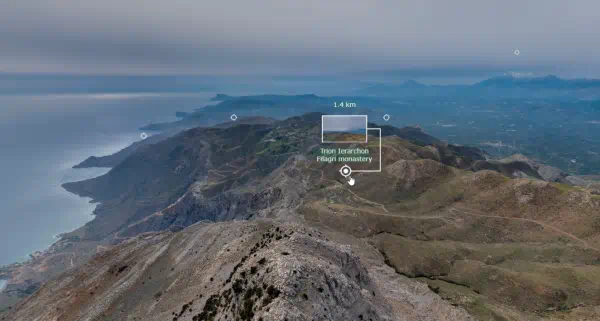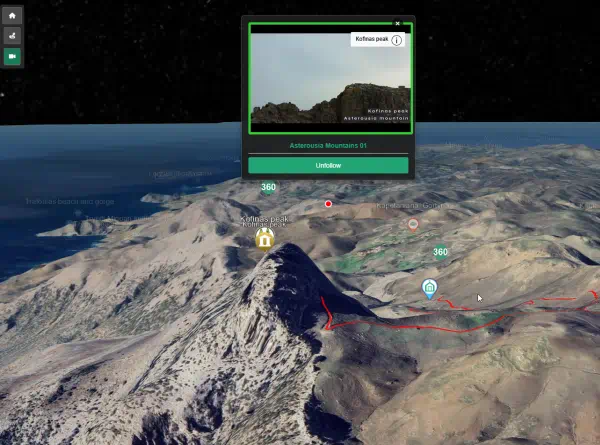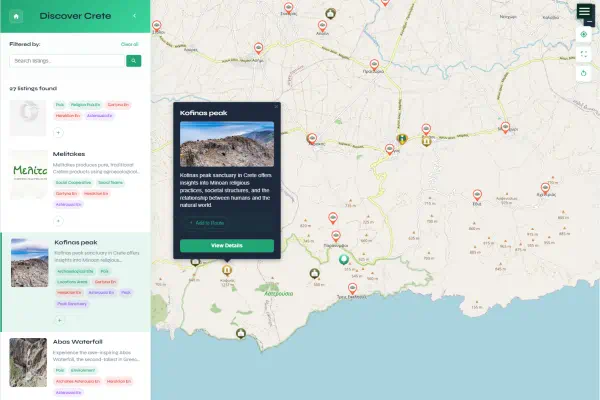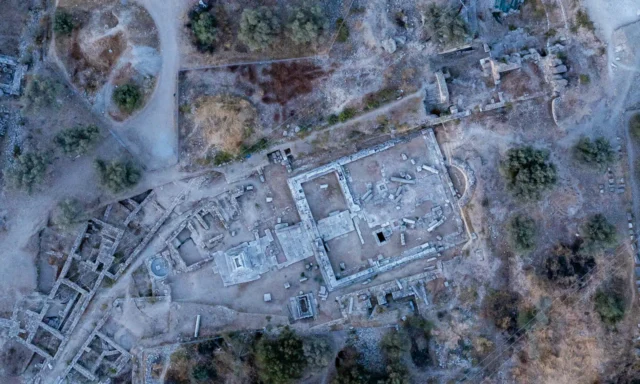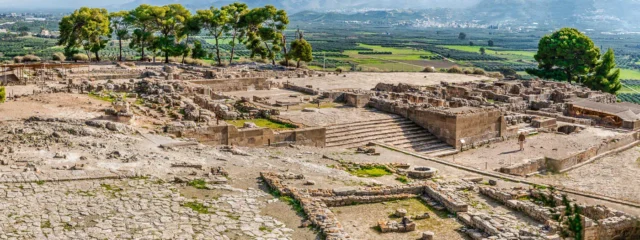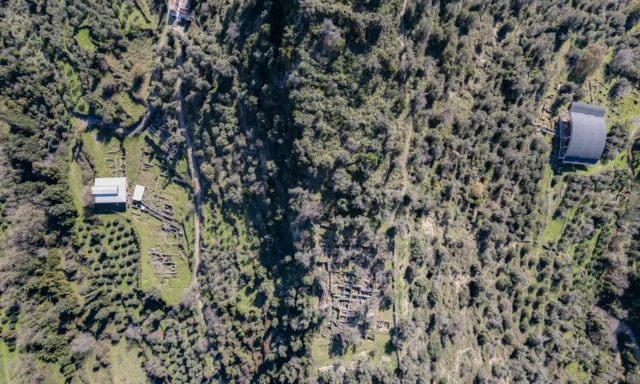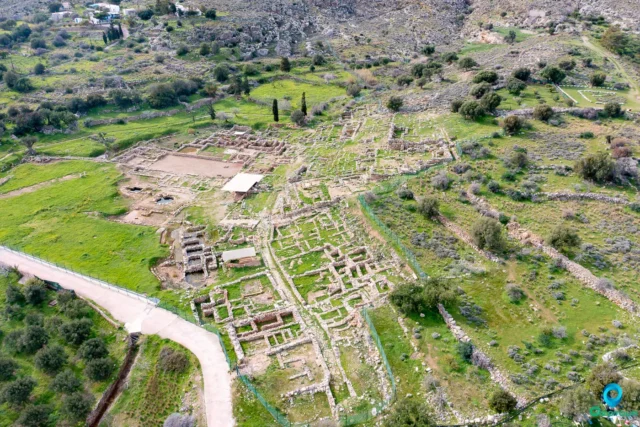Minos Kalokairinos
Biography of Minos Kalokairinos
Minos A. Kalokairinos was born in 1843 in Heraklion, Crete, which was then part of the Ottoman Empire. He was the youngest son of Andreas Kalokairinos, a wealthy landowner, and Mariora Krasaki, from a notable Franco-Cretan family. The family owned the Kephala hill, the site where the Palace of Knossos was later found. Minos had an older brother, Lysimachos.
He attended secondary school on Syros and briefly studied law at the University of Athens before returning to Heraklion due to his father’s illness and death. Around 1903, he resumed his law studies and received a degree in 1905, becoming a lawyer in Cretan courts.
Kalokairinos’s primary occupation was business. He managed family estates with his brother, manufactured soap (winning awards at international exhibitions), and was involved in property, trade, and winemaking. However, he faced financial difficulties, leading to bankruptcy in 1895, which legally barred him from commerce.
He was active in civic life, serving as an interpreter for the British Vice-Consulate, Vice Consul for Spain, and director/treasurer for schools in Heraklion. He married Skevo Kyriazi in 1869 and had five children. His later life was marked by tragedy during the Cretan revolt in 1898: his brother Lysimachos and his son were killed, his niece disappeared, and the family home and his archaeological collection were destroyed by fire.
Kalokairinos had a strong interest in antiquity, particularly Cretan history, influenced by classical authors like Homer and Pausanias. This interest led him to excavate at Knossos. He is referred to as an antiquarian and amateur archaeologist. His land ownership provided access to the Knossos site, but financial instability, worsened by the 1895 bankruptcy, limited his ability to pursue extensive archaeological work. The personal losses and property destruction in 1898 likely contributed to a withdrawal from active pursuits just as political changes in Crete (autonomy from the Ottoman Empire) created conditions favourable for Arthur Evans to begin large-scale excavations.
Excavations at Knossos (1877-1878)
Minos Kalokairinos conducted the first explorations at Knossos on the Kephala hill in 1877, followed by more concentrated excavations in late 1878. The main campaign lasted only about three weeks before being stopped by Ottoman authorities. Some sources mention activity extending into 1879.
His work focused on the western part of the hill, later identified as the West Wing of the palace. He dug twelve test pits or trenches in an area approximately 55 by 40 meters. These initial probes revealed parts of the West Wing magazines, a section of the West Facade, and a corner later identified as part of the Throne Room complex. Evans later noted scorch marks on the West Facade, possibly related to the destruction layer Kalokairinos had partially exposed. These original excavation trenches were removed during Evans’s subsequent larger-scale work.
Key discoveries included numerous large storage jars (pithoi) in the West Wing magazines, some still containing traces of agricultural products and featuring applied rope or incised decoration. He also noted architectural elements and, significantly, a double-axe symbol (labrys) carved on a stone wall. Finds reportedly included fragments of painted wall plaster and pottery sherds resembling those found by Schliemann at Mycenae.
Although considered an amateur, Kalokairinos documented his work. W.J. Stillman described his records as “meticulous”. However, most of these primary notes, along with many finds, were destroyed in the 1898 fire at his home. Some manuscripts survived, including documents now held in the Heraklion Archaeological Museum, which have been used in recent research by scholars like Katerina Kopaka and Antonis Kotsonas. Later in life (1906-1907), Kalokairinos published the Kritiki Archaiologiki Ephemeris (Cretan Archaeological Journal), discussing his Knossos findings and research on Greek and Roman Knossos. His son mentioned potential manuscripts titled The Knossian Labyrinth and The Royal Palaces of Minos.
The Ottoman Context
Kalokairinos excavated when Crete was under Ottoman rule, a period marked by political instability and Cretan resistance. The Ottoman Empire had begun implementing laws to control antiquities export. The 1874 Ottoman Antiquities Law, in effect during Kalokairinos’s dig, established state ownership but allowed for finds to be divided (partage) among the landowner, the state (Imperial Museum, Constantinople), and the excavator. Kalokairinos expected to receive a share (reportedly one-third) of his finds under this law.
His excavation was stopped after three weeks by Ottoman authorities. The primary reason cited was fear among local Cretan officials, scholars, and the Ottoman administration that significant finds would be confiscated by the central government and removed to Constantinople. Fotiadis Pasha, the Governor of Crete, ordered the halt, reportedly in agreement with local scholars, to prevent potential export. The general political instability and suspicion towards foreign interest in Cretan antiquities also contributed to the decision. This action highlights a complex situation where local desire to keep heritage on the island aligned with Ottoman administrative control concerns. The later, stricter 1884 Antiquities Law, which abolished partage and declared all finds state property, was enacted after Kalokairinos’s excavation had ceased.
Interactions with Arthur Evans
After his excavations were stopped, Kalokairinos continued to promote the Knossos site. He guided visitors, including archaeologists and dignitaries, around the limited diggings and showed them his collection of finds at his Heraklion home. His goal was to generate international interest. Heinrich Schliemann visited in 1886 but failed to get permission or agree on a price to buy the site.
In 1894, Arthur Evans, then Keeper of the Ashmolean Museum, visited Crete, initially searching for evidence of early writing systems. Kalokairinos guided Evans at Knossos, showing him the excavated areas and finds, including pithoi, architectural elements, and examples of early scripts (Linear B tablets). Evans was deeply impressed and became determined to excavate the site himself. He interpreted the ruins through the lens of Greek myth, referring to the “Labyrinth” in his 1894 diary and coining the term “Minoan” for the civilization.
Evans used his personal wealth to begin acquiring the Kephala hill site, possibly starting soon after 1894, with full ownership secured potentially by 1897 or 1899. Kalokairinos’s bankruptcy in 1895 likely made it easier for Evans to purchase the land. Evans waited until Crete gained autonomy from the Ottomans before beginning his large-scale excavations in 1900, starting in the areas Kalokairinos had previously explored. Kalokairinos’s work was foundational to Evans’s success, providing the initial identification, evidence, and attracting Evans’s attention. However, some scholars suggest Evans did not sufficiently credit Kalokairinos in his publications.
Fate of the Finds
Kalokairinos initially kept his discoveries from Knossos at his family home in Heraklion. A significant portion of this collection, including many pithoi and his excavation records, was destroyed when the house burned down during riots in August 1898. Only items described as the “rarest objects,” kept separately, survived the fire.
Before and possibly after the fire, Kalokairinos strategically donated some of the most important surviving artifacts, mainly pithoi, to various museums to publicize the site:
- British Museum, London: One pithos (donated 1884, transported on HMS Minotaur). Minos and his brother had previously donated a statue from Lyttos in 1867.
- Louvre Museum, Paris: Two pithoi.
- National Archaeological Museum, Athens: One pithos.
- Rome (Museum unspecified): One pithos.
- Heraklion Archaeological Museum: Three pithoi, initially donated to the local Filekpaideutikos Syllogos (Association for the Friends of Education), subsequently became part of the museum’s core collection.
Therefore, the surviving material from Kalokairinos’s 1878 excavation is dispersed across several institutions, primarily in Heraklion, London, Paris, and Athens, with possible items elsewhere. The 1898 fire resulted in irretrievable losses.
Archaeological Methods
Kalokairinos’s work in 1877-1878 involved “soundings” or “test pits,” typical exploratory methods of the time. He dug twelve such probes in the West Wing area. While sometimes labelled an “amateur” or even “treasure hunter,” contemporary accounts like W.J. Stillman’s suggest he kept “meticulous” records, indicating an attempt at systematic documentation, though these notes were mostly lost.
Compared to his contemporary Heinrich Schliemann, whose methods at Troy were often seen as hasty and destructive, Kalokairinos’s limited probes appear less invasive. Schliemann used large teams and sometimes damaging techniques, focusing on reaching the earliest levels quickly. Kalokairinos’s reported emphasis on record-keeping suggests a potentially more careful approach to documentation than Schliemann’s early work.
Arthur Evans, excavating from 1900, employed more developed techniques. He had a specialized team (including archaeologist Duncan Mackenzie for detailed recording, architects, and artists), conducted large-scale systematic excavation, used stratigraphy to establish chronologies, and produced extensive documentation. However, Evans’s controversial use of reinforced concrete for extensive architectural reconstructions permanently altered the site in ways Kalokairinos’s brief work did not. Kalokairinos’s methods reflect the antiquarian practices of the 1870s, preceding the more systematic approaches and the large-scale interventions seen later under Evans.
Other Contributions
Minos Kalokairinos’s interests extended beyond the Bronze Age palace at Knossos. He researched and documented the Greek and Roman periods of the site. His Kritiki Archaiologiki Ephemeris (1906-1907) contained significant work on the topography and monuments of classical Knossos, including descriptions of the Acropolis hill, discussions of the city walls based on classical authors, and notes on a theatre/amphitheatre. This work provides valuable information on the post-Minoan site before modern changes.
The journal also reported on other excavations in Crete and discussed mythology and history. Kalokairinos tracked Cretan antiquities that had been removed from the island to collections elsewhere. His earlier donation (with his brother) of a statue from Lyttos to the British Museum in 1867 shows a long-standing interest in Cretan antiquities. Potential unpublished manuscripts on the Knossian Labyrinth and Minoan palaces further suggest continued engagement with the site’s interpretation. These activities establish him as a broader figure in 19th-century Cretan historical research, contributing significantly to the understanding of the island’s classical past.
Legacy and Recognition
For many years, Minos Kalokairinos’s role was overshadowed by Arthur Evans, who became widely known as the discoverer of Knossos due to his extensive excavations, publications, and reconstructions. Some suggest Evans did not fully acknowledge Kalokairinos’s initial work.
Since the late 20th century, scholarly research, particularly by Katerina Kopaka and Antonis Kotsonas using surviving archival materials, has led to a reassessment. Kalokairinos is now increasingly recognized as the “first excavator” and a pioneer whose work was crucial for identifying Knossos and guiding Evans.
Public recognition has also grown, especially in Crete. In 2019, a bronze bust of Kalokairinos was placed near Evans’s bust at the Knossos site entrance, funded by local citizens to correct a perceived historical omission. Documentaries have been made about him. The Historical Museum of Crete is housed in the rebuilt Kalokairinos family mansion in Heraklion.
Kalokairinos’s motivation was rooted in his Cretan identity and desire to connect archaeological finds with classical texts about Minoan Crete. His story represents local initiative within the context of Ottoman rule and Cretan aspirations. The modern recognition challenges earlier narratives centered on foreign figures and highlights the contributions of local individuals to archaeological discovery, reclaiming his place in both archaeological history and Cretan heritage.
References
- Kopaka, K. (2015). Minos Kalokairinos and his early excavation at Knossos. An overview, a portrait, and a return to the Kephala pithoi. In ‘Studies in Bronze Age Aegean Art and Archaeology in Honour of Professor John G. Younger’ (Aegaeum 39), Peeters, Leuven-Liège, 33-44.
- Kopaka, K. (2016). Nouvelle évidence sur la fouille Kalokairinos à Knossos. In ‘Actes du Colloque « Aux origins de l’archéologie crétoise »’ (BCH supplément).
- Kopaka, K. (2023).34 Minos A. Kalokairinos – A pithos from his excavation at Knossos (1878/79) in Heraklion Archaeological Museum.35 Archaeologia Austriaca, 107, 303-318.
- Kotsonas, A. (2020). Greek and Roman Knossos: The Pioneering Investigations of Minos Kalokairinos. Annual of the British School at Athens, 115, 333-360.

